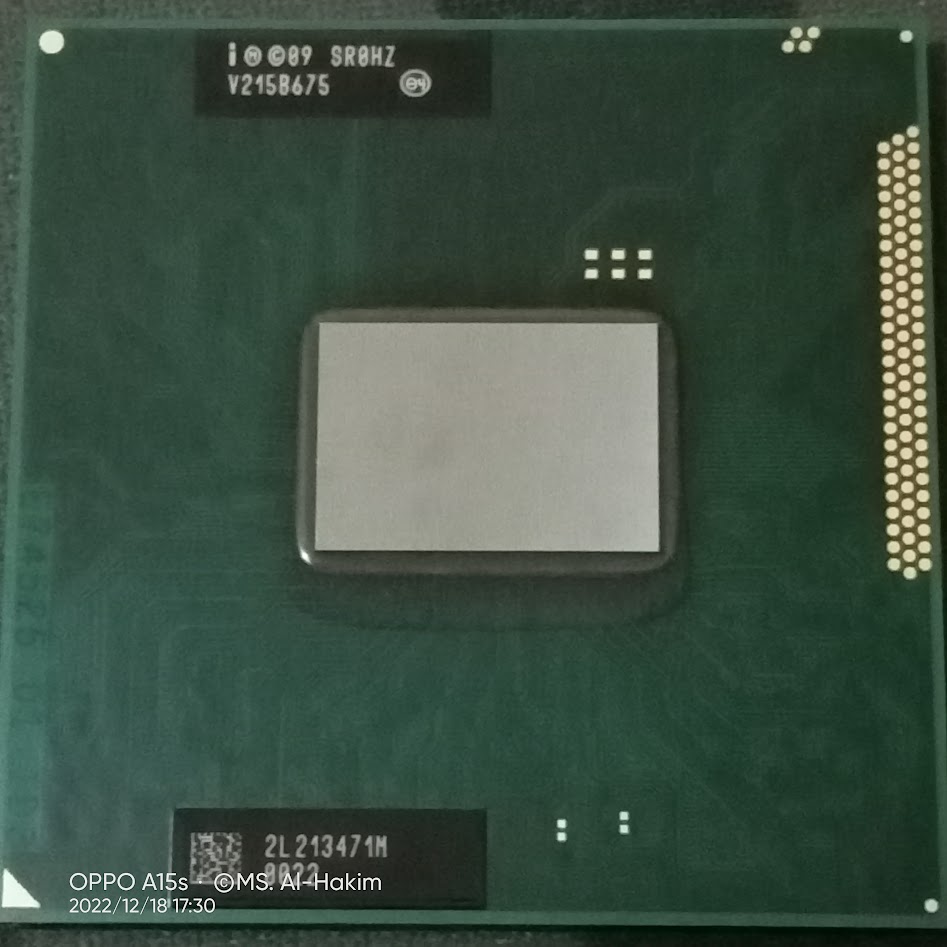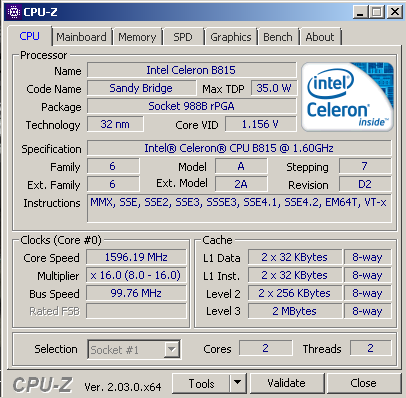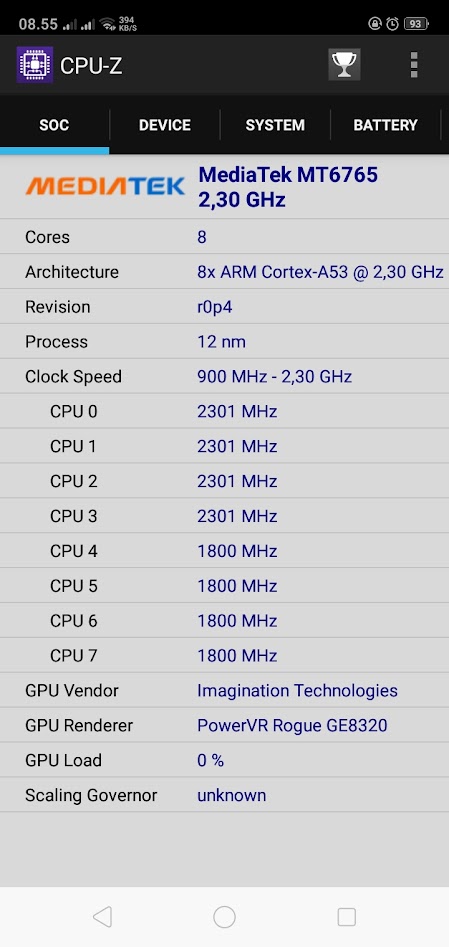Comparing: Intel Celeron B815 vs MediaTek MT6765 Helio P35
In this comparison, we analyze two Processors: Intel Celeron B815 and MediaTek MT6765 Helio P35, using synthetic benchmark tests to evaluate their overall performance. This side-by-side comparison helps users understand which hardware delivers better value, speed, and efficiency based on standardized testing. Whether you're building a new system or upgrading an existing one, this benchmark-driven evaluation offers valuable insights to guide your decision.

MediaTek MT6765 Helio P35
| Type: | Processors |
|---|---|
| Brand: | MediaTek |
| Model: | MediaTek MT6765 |
Specification Comparison Table
This specification comparison presents technical details of several devices or components to help you understand the key differences between each option. Use this table as a reference to determine which device best suits your needs.
| Specification | Intel Celeron B815 | MediaTek MT6765 Helio P35 |
|---|---|---|
| Architecture | x86 | ARM |
| Technology | 32 nm | 12 nm |
| Clock | 1.6 GHz - - | 1.8 GHz - 2.3 GHz |
| Core/Thread | 2 / 2 | 8 / 8 |
| Segmen | Mobile | Mobile |
Submission Comparison Table
This submission comparison table displays the number and details of benchmark data submissions from various devices or components. This information helps you understand the performance based on the benchmarks that have been tested, as well as providing an overview of the consistency and popularity of the available benchmark results.
Submission Comparison Chart
This chart visualizes the benchmark scores comparison between two hardware devices based on submitted data.
Media Gallery
A collection of photos of tested hardware. These images can help you identify the physical form, model, and variant of the hardware in question. These photos are from our own documentation, and if they are not available we may not be able to document them.
About Hardware Intel Celeron B815
The Intel Celeron B815, released in 2012, is an entry-level mobile processor based on the Sandy Bridge architecture. Designed for budget laptops, it features 2 cores and 2 threads with a fixed clock speed of 1.6 GHz. The processor does not support Turbo Boost or Hyper-Threading, limiting its multitasking capabilities.
Manufactured using 32nm process technology, the Celeron B815 has a TDP of 35W, which is relatively high for a low-end mobile CPU. This higher thermal output typically results in shorter battery life and more heat generation compared to modern low-power processors.
For graphics, the processor is equipped with Intel HD Graphics 2000, which runs at a base frequency of 650 MHz and can boost up to 1.0 GHz. While not suitable for gaming, this integrated GPU handles basic visual tasks like 720p video playback, simple animations, and light graphical workloads adequately.
In everyday usage, the Celeron B815 performs best with lightweight applications such as web browsing, word processing, and playing standard-definition videos. However, it struggles with modern operating systems, multitasking, and heavier workloads due to its limited core/thread count and lack of advanced CPU features.
Hardware Detail:
Device: SAMSUNG 300E4Z
RAM: 4GB DDR3 Dual Channel
OS: Windows 7
Sunday, 27 November 2022 02:25:40 | Update: 1 month ago
About Hardware MediaTek MT6765 Helio P35
The MediaTek Helio P35 (MT6765) is a mid-range mobile processor introduced in 2018, designed to offer a balance between performance, efficiency, and affordability. It features eight ARM Cortex-A53 cores, all running at speeds of up to 2.3 GHz, allowing for decent multitasking and responsiveness in everyday applications.
Built using the more efficient 12nm fabrication process, the Helio P35 is a significant improvement over older chips like the MT6750 or MT6737, both in terms of power consumption and thermal performance. This makes it well-suited for entry-level and mid-range smartphones with tighter thermal and battery constraints.
For graphics, the SoC integrates the PowerVR GE8320 GPU, which supports Full HD+ displays and provides enough power for media consumption and light gaming. It also includes support for AI-enhanced features, such as image processing and face detection, though without a dedicated NPU, the AI performance is modest compared to higher-tier chipsets.
While the Helio P35 is not intended for high-performance gaming, it performs well for tasks like social media, video playback, camera use, and general app usage. However, more demanding 3D games will run only at low graphics settings with occasional frame drops.
Hardware Detail:
Devices: OPPO A5s & OPPO A15s.
Device Specifications: MediaTek MT6765, 3/32 (A5s), 4/64 (A15s), Android 8 (A5s), Android 10 (A15s).
Room Temperature: 30°C based on DHT11 Sensor.
* Note: The OPPO A15s was used in some tests due to compatibility issues with Android 8 on A5s in certain applications.
Sunday, 08 September 2019 11:02:46 | Update: 1 month ago





